Booster Content Marketing Production with Solid Blueprint
Author & Editor
Founder & CEO
Published on: May 10, 2022 Updated on: Mar 19, 2025
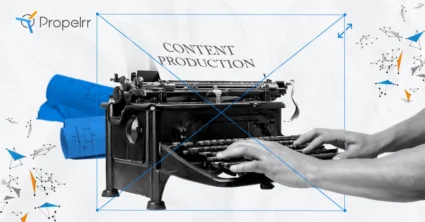
Table of Contents
Every well-laid-out marketing initiative today requires a content development framework and content marketing as its core components, given the multi-channel approach's potential in reaching varied target markets.
Digital marketing company and proven digital marketing strategy frameworks always ensure that, at the heart of any brand's campaign, promotion, or communication online is a content development framework that addresses audiences at any stage of the buying journey.
Look at the Google chart below.
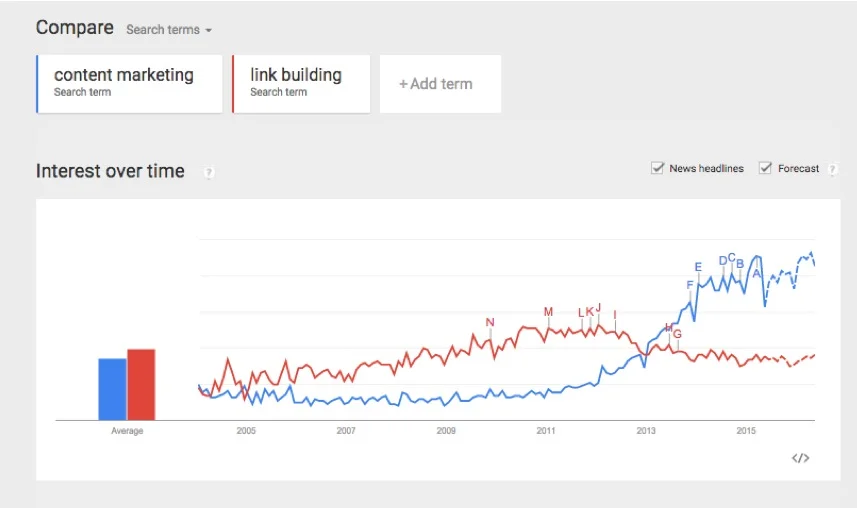
The graph indicates a trend that most digital marketers today are rooting for —content marketing. In comparison to link building for SEO, content marketing search interest volume already overtook it since 2013. This clearly shows how storytelling, personalization, and content strategy are taking over in digital marketing world.
So, why content marketing?
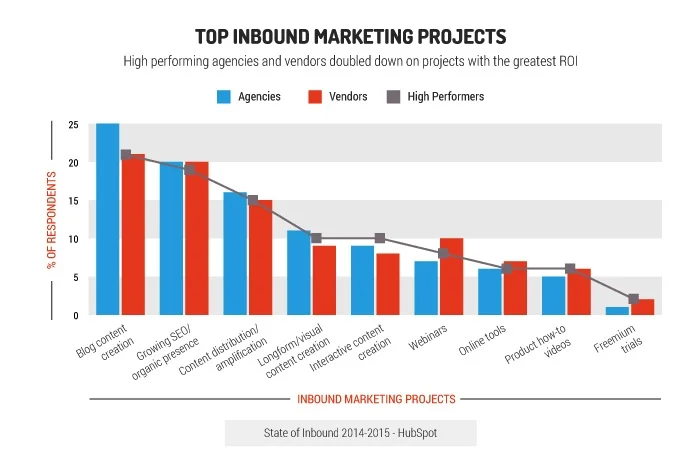
Hubspot’s State of Inbound 2014-2015 report shows that companies with the highest ROI focused on blogging, organic search, and content amplification that prove further relevance of content in the digital landscape. Cohesive content strategy is key to everything. Admittedly though, it isn’t rocket science to understand that any digital marketing would need quality content (be it on paid, earned, or rented media) to etch success.
Speaking of quality content, it’s also not a walk in the park if you plan on scaling your production, because it demands real punching power to impact your KPIs. A one-shot viral content won’t necessarily determine that your content marketing is working. Success demands consistent creation of good content that converts users as brand advocates, buyers, returning visitors, and influence-propagators. However, you need to acknowledge that under the hood of a solid content research and strategy is a well-laid out content production process that guides your content team.
Let me wander a bit here to provide you an analogy on what I am trying to point out.
Just like any production or manufacturing company, the real pain and drawback are defective bolts and knots, and over-runs that did not pass quality control. If the number of defects increases, losses increase. They are directly proportional. This has been an age-old problem in the manufacturing industry. However, there’s one company that’s on top of my mind right now that has been very efficient in solving this type of issue, it is Toyota. Their “Lean Production” or Toyota Production System (TPS) delves primarily on eliminating non-value added elements. Toyota focuses on flexibility of production lines.
The belief of right process produces right results makes Toyota one of the best brands in the world for the longest time now.
Similarly, one of the pain points in content marketing production in particular are the number of returns, edits, and unguided content production and overproduction resulting to a lot of wasted resources, if you think of it.
I’m going to give you a few seconds to think. Then, try to count the number of hours you’ve spent just to edit and re-edit articles without solid directions (more so, interactive visual content!) that were produced by your content team. A lot, right? Don’t worry; you are not alone. Okay, let’s talk about scaling things rightly.
Here’s a high-level diagram from Content Marketing Institute about scaling content.
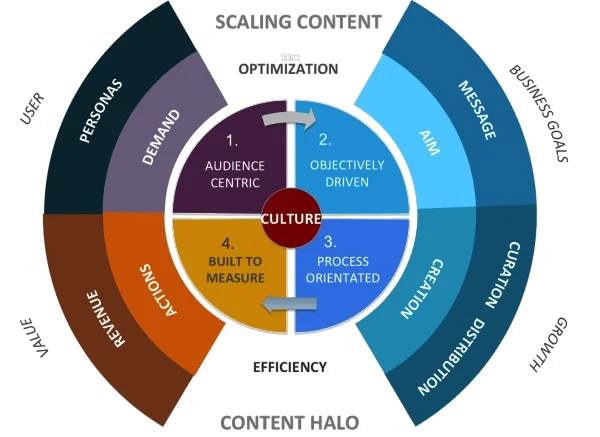
You may have noticed that in order to scale content, the innermost circle must be addressed first. It is called the culture of content that is based around performance and attribution, according to Andy Betts.
Before you even think of scaling your production, you need to know how to measure your content ROI first. Content performance shouldn’t be myopic focusing only on soft metrics such as social shares, likes, number of followers, and unique page views. While having some metrics on brand amplification and resonance is a good thing, one must also include macro conversions that provide revenue and sale —performance metrics to cover all areas that impacts the business as a whole.
Let me share you Andy Betts’ Content Performance Measurement Layers.
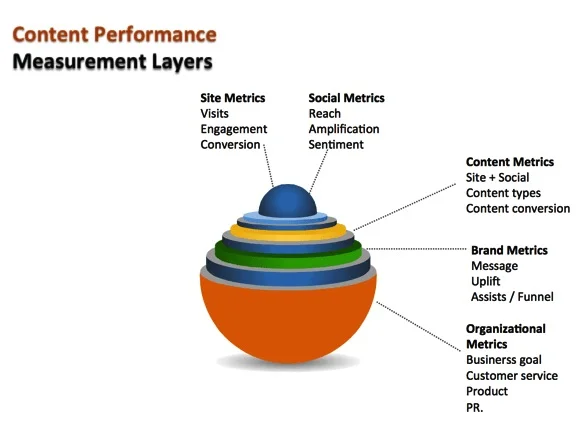
We all know that performance differ for many stakeholders. Different companies have varied KPIs. That is why; it is crucial that business objectives and strategic goals are already pre-identified for any digital marketing campaign.
Zooming-in content performance, individually or collectively, you should measure it up against your already identified KPIs and properly attribute them from your digital channels, and the content team who developed it for organizational metrics.
Given the concept presented on the culture of content, you can now have your own content team composed of subject matter experts, content strategists, copywriters, and content creators.
On the content production side of things, let me share what we’ve developed so far at Propelrr. It is called the Propelrr Content Development Framework (PCDF) that every content creator in our agency follows in order to smash showstoppers or non-value elements in our pipeline.
Have a look at Propelrr Content Development Framework (PCDF)
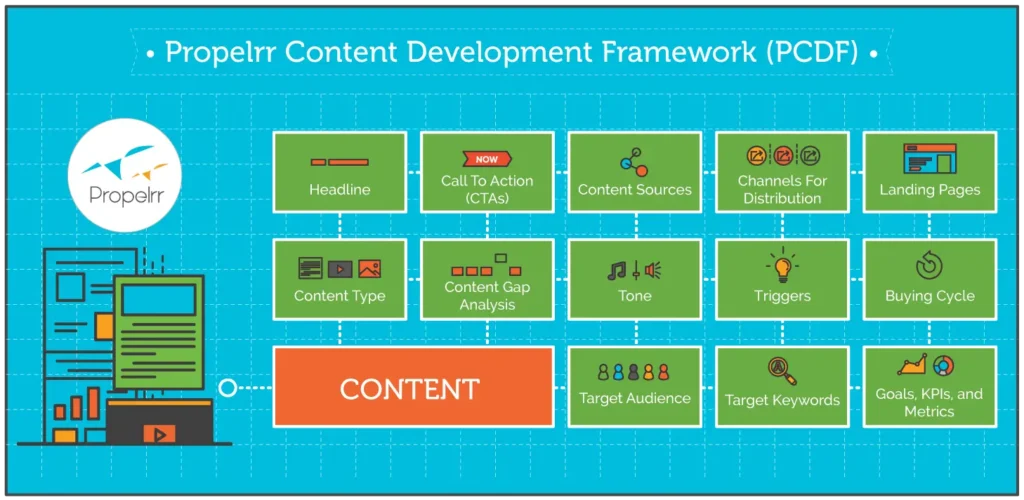
1. Provide Suggested Headlines (at least 2-3 titles)
According to the Copyblogger, 8 out of 10 readers will see your headline but only 2 will most likely read the rest. This gives you a slim chance nailing your coveted audience to read your entire article.
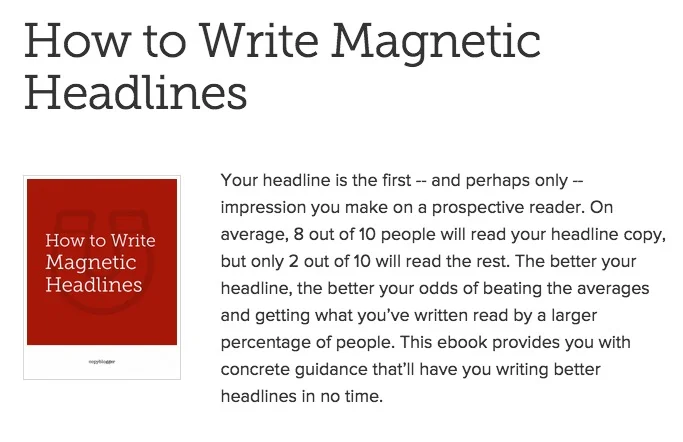
Crafting compelling headline is your best bet to pierce through the barrage of information competing for your online readers’ attention. It is important then that in any content you will produce, suggested headlines are already in place. At the very start, it will give your writers some sense of direction, where they can align their creative juices.
Pro-tip: Build great headlines first.
2. Include Specific Buying Cycle
Not all content are created equal so as their intended purposes. I believe that every piece of content on the web can be classified based on a specific buying cycle.
Let’s recall the five stages of customer’s buying cycle.
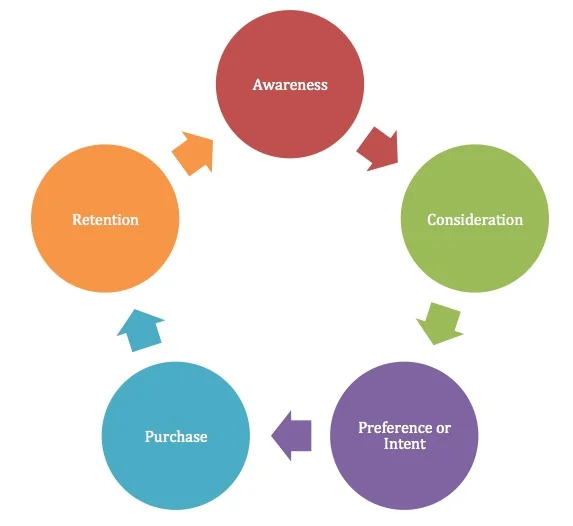
2.1 Awareness
A customer understands his/her need and realizes that your business can potentially be the answer to it.
Content Suggestion:
These are generally informational content such as branded content, how-to videos, data-rich infographics and articles.
2.2 Consideration
A customer starts evaluating your products and services if you are the right fit for his/her needs/wants.
Content Suggestion:
S/he may find you via search using a long-tail key phrase. Put you in comparison to other brands and s/he may consume your content that describes your competitive advantage or your unique value proposition.
2.3 Preference or Intent
A customer begins to have preferential bias on your products or services that may lead to purchase.
Content Suggestion:
These are pieces of content that provide solutions and answer to your customer’s needs. These can be your detailed information of products or services including reviews, testimonials, and essential proof of points.
2.4 Purchase
This is when your users proceed to the actual purchase itself. This stage could vary depending on your goals (sales, sign-ups, downloads, et cetera).
Content Suggestion:
This can be your page copies on your checkout process, shipping cart details, detailed prices and security protocols that you can clearly spell out on your website.
2.5 Retention
This is a returning customer that stays as a paying customer because of your good customer service, and unbeatable reward systems.
Content Suggestion:
This can be your easy-to-understand FAQs, clear customer service copies, return and privacy policies, and newsletters with CTAs for discount couponing or exclusive membership. As discussed above, it is imperative then that your team understands the intent of your content by specifying the buying cycle you wanted to target.
3. Spell Out The Content Type
Content type can vary differently. This can be visual content like infographics, HTML5 interactive graphics, long-form articles, white papers, slides, ebooks, curated articles, interviews, videos, and the list goes on. The idea here is that you need to be very specific on what content type you need and expect to be produced.
Different content types also serve varied market segments. B2B market would normally prefer expert interviews, white papers, case studies, webinars, Q&A sessions, and more; while B2C market would usually opt for micro videos like vine, user generated content, blog posts, quizzes, captivating product photos, contests, and a lot more.
4. List Down Your Target Audience
Since I have been focusing on content production, I assumed that your buyer personas and target market are clearly mapped out. Your content team must have a copy of your client’s buyer personas and communication brief beforehand.
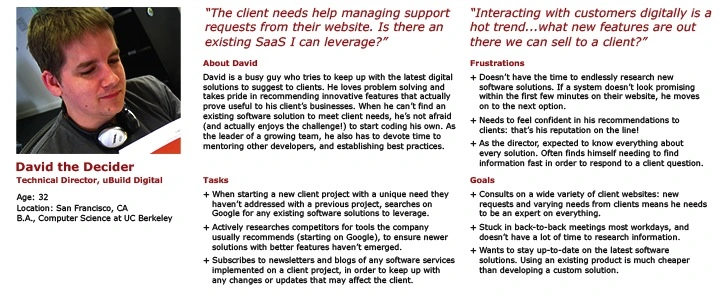
Buyer Persona By Neilsen Norman Group
We always do the briefing upon on-boarding of clients to discuss the overall objective, strategy, tactics, duration, and target of the whole campaign.
5. Set Goals, KPIs, Metrics, and Targets Per Content/Campaign
Anything you strive to do with your content must have goals and specific targets. It will be easier for your team to craft their content having both in mind. Link Acquisition, Reader Engagement, Lead Acquisition or Nurturing, Buy Product XYZ, etc. are just some of the examples of content goals.
It is also good to include your KPIs and corresponding metrics plus the targets.
Here’s my slideshare presentation about setting online campaigns using killer KPIs.
How to Set Straight your Online (SEO) Campaigns with killer KPIs from Gary Viray
6. Inject Call-To-Actions (CTAs)
Every piece of content you produce must have call-to-action element/s so you can slingshot your readers’ to your desired actions. Sample CTAs are newsletter sign-up, buy a product button; make a phone call, read other articles on your site, or use of the contact form.
Take note that it is largely dependent on your copywriting prowess to effectively invoke actions from your readers.
7. Suggest Opportunity Ideas Based On Content Gap Analysis
Before even embarking on the content production task, it is a prerequisite to perform content audit, inventory, and gap analysis. Spotting opportunities based on content gap analysis is a great way for your team to maximize their creativity and to personalize their approach based on the identified target market. Paula Land of Strategic Content explains it really well below.
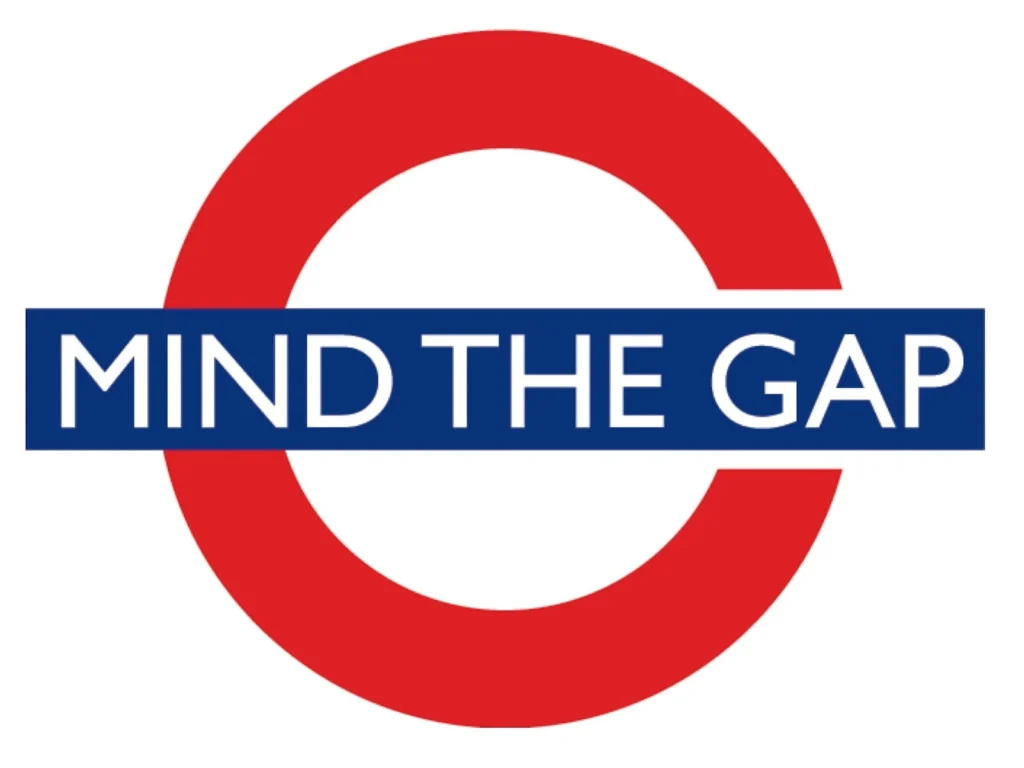
Content Gap Analysis
“While the Gap Map is not a complete foundation for a personalization strategy, it is a good starting point to evaluate just how much and where your content needs to allow for personalization. Both documents will support your work to tag content with the right attributes for personalization as well.”
Minding the gap to scout for content opportunities is the fastest and cost-effective endeavor you can do especially so when you are going head-to-head with Goliath competitors. Moreover, it is always a good idea to create content which can go over the top against existing top content on SERP.
8. Provide Target Keywords
Of course, never forget your key phrases and terms to include in your Propelrr Content Development Framework (PCDF). While we should be user-first content creators, we need to provide avenues for search engines to index and rank your content accordingly on SERP based on your keyword research.
9. Point Out The Right Landing Pages
Include content sources to provide credibility, direction, and proper attribution. These can be publications, influencers, authors, books, institutions or credible websites that you can contact later by recognizing their value to the content you’ve created. You can even ask them to promote, tweet, and even link to your content should they find it valuable.
Content sources are good jumping boards in promoting your content.
10. Suggest A Tone
The idea of providing suggested tone is to let your content team adjust as close as possible or even match the publication or website the content is intended for. In most cases, tone is one of the most neglected elements in content creation. Thus, it is but wise to include it in your content development framework.
11. Emotional Triggers
Triggers evoke emotions or drive actions. Either way, it is a surefire technique of connecting to your audience, serving as an opening to their realm to get your message across without being interrupted. If you can trigger their emotional buttons, you can easily win their full attention. Try to read more about the 50 trigger words suggestion from Copyblogger.
12. Mention The Channels For Distribution
Where will your content be posted/distributed/shared? Is it on social media, forums, communities, or major publications? It is best to state this in your content direction so that your content creators would know how to craft their content based on the parameters of the target channels.
Some Notes
1. Content marketing relies heavily not just on solid concept and strategy but also on quality content development. It is important then to have well-defined content performance metrics, and crystal-clear direction as to where you wanted to head.
2. Content are supposed to be good investments/assets and not cost centers of any digital marketing campaign. Remember, quality content isn’t cheap. That’s why, you need to maximize every content you produce to fulfill its intended goals.
3. Consistent content production guided by an overarching content strategy gets the job done than those “lucky strike” or one-time big-time content that comes out once in a blue moon.
4. Content writing combined with kickass copywriting are essential elements your content team should have.
